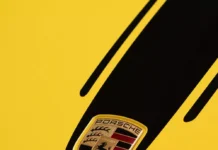Yesterday morning, March 24, 2024, Mr. Dang Le Nguyen Vu once again amazed car enthusiasts and sports car enthusiasts as he took to the streets with a car that has been included in the list of legendary JDM cars, the Mazda RX-7 FD.
The iconic JDM Mazda RX-7 FD in Vietnam, the sophistication of Mr. Vu cannot be disputed
With hundreds of JDM cars in his collection in less than 2 years, recently, Mr. Dang Le Nguyen Vu has once again caused a stir when he drove a Mazda RX-7 FD, a legendary Mazda sports car with a unique rotary engine, and the car was only spotted in Vietnam last year.
What is the history of the Mazda RX-7?
Facing competition from many rivals, Mazda developed the RX-7 to become a true high-performance car with a unique rotary engine, rear-wheel drive, and a front-mounted engine produced and introduced to the market by Mazda from 1978 to 2002 across three generations, all utilizing the compact and lightweight Wankel rotary engine.
The first-generation RX-7, sometimes referred to as the SA (early) and FB (late), is a two-door hatchback coupe. It had a carbureted 12A rotary engine as well as the option of an electronically fuel-injected 13B rotary engine in later years.


The second-generation RX-7, sometimes referred to as the FC, was offered as a two-seat coupe with the 2+2 option available in some markets, as well as a convertible body style. This engine was equipped with a 13B rotary engine and was offered in naturally aspirated or turbocharged versions.
And finally, the third-generation RX-7, the one owned by Mr. Dang Le Nguyen Vu, is called the FD and offers a 2+2 seat coupe with a limited number of 2-seat options. Some markets only have the 2-seat version. It features a sequential twin-turbocharged 13B REW engine.
Over 800,000 RX-7s were produced by Mazda from 1978 to 2002, spanning 24 years of development. Until this day, this is a model that many car enthusiasts seek after, with prices ranging from $35,000 to $65,000 for affordable options, and more expensive ones reaching hundreds of thousands of dollars.
Mr. Dang Le Nguyen Vu’s Mazda RX-7
The new Mazda RX-7 driven by Mr. Vu belongs to the third generation, which is most evident in the design of the car, especially the taillights and the rear spoiler.
According to research, this Mazda RX-7 RD first appeared on the streets in the middle of last year, with an orange color and belonging to the collection of a well-known car enthusiast in Saigon who is famous for hunting down JDM cars with Laotian license plates. This car was seen with a Hanoi license plate.


And when it comes to Mr. Vu’s car collection, the car has been wrapped or repainted in a blue color, with a white roof and dark-colored rims, very stylish. The interior of the car has also aged over time, but importantly, the car is still in good condition. The car features racing seats that hug the driver tightly, and two additional compartments for coffee cups and cigarette butts have been added.
The Mazda RX-7 RD has also been given a new license plate, and it is sure to be one of the most attractive cars in Mr. Dang Le Nguyen Vu’s collection of over a hundred JDM cars, especially alongside the lineup of Toyota Supra and Acura NSX cars.
What makes the Mazda RX-7 RD appealing
The third-generation Mazda RX-7 has an updated body design. It was unveiled in October 1991, with production starting later that month before being sold in December in the domestic Japanese market. Left-hand drive exports began immediately after.
The 13B-REW engine is a twin sequential turbocharging system that was first mass-produced and exported from Japan, increasing horsepower to 252 in 1992 and finally to 276 horsepower by the time production ended in Japan in 2002.


For the third-generation RX-7, Mazda held an internal design competition between its four design studios in Hiroshima, Yokohama, Irvine, and Europe. The winning design came from the design center in Irvine and was designed by Taiwanese automotive artist Wu-huang Chin, who had previously worked on the Mazda MX-5 Miata, with assistance from Tom Matano.
However, the interior design stemmed from a design proposal in Hiroshima. Mazda’s chief designer Yoichi Sato then helped bring the design concept to its final production form. In Japan, sales were affected as this car did not comply with Japan’s size regulations, and buyers had to pay annual taxes for non-compliance with the vehicle’s width.



Because the RX-7 is now considered a luxury sports car due to its increased width, Mazda also offered two smaller models, the Eunos Roadster and the Eunos Presso hatchback. The twin sequential turbocharging system, introduced in 1992, is extremely complex and was developed with support from Hitachi.
Previously, it was used on the exclusive Cosmo JC line in Japan. The system utilizes two sets of turbochargers, one providing a boost pressure of 0.69 bar from 1,800 rpm. The second turbocharger is activated in the upper half of the rpm range, while accelerating at speeds above 4,000 rpm to maintain a pressure of 0.69 bar until exceeding the red limit.





This conversion process occurs at 4,500 rpm, with temporary pressure drop to 0.55 bar, and provides linear acceleration from a wide torque curve throughout the entire rpm range under normal operating conditions.
Under high-speed driving conditions, the conversion process has significantly increased power output and forced skilled drivers to adjust their driving style to anticipate and minimize any oversteer when entering corners. The standard turbo control system uses 4 control solenoids, 4 drive units, both vacuum and pressure chambers, and several preformed vacuum/pressure pipes, all of which are partially prone to damage due to their inherent complexity and high operating temperatures of the rotary engine.
Saigon billionaire parades his fleet of luxury cars, including a unique color Ferrari SF90, to celebrate his wife’s birthday.
On his wife’s birthday, wealthy businessman Hoang Kim Khanh cruised the streets in his extravagant collection of supercars worth hundreds of billions of VND. Among them was his one-of-a-kind, uniquely colored Ferrari SF90 with the lucky license plate “thần tài” (meaning “lucky charm” in Vietnamese).













































